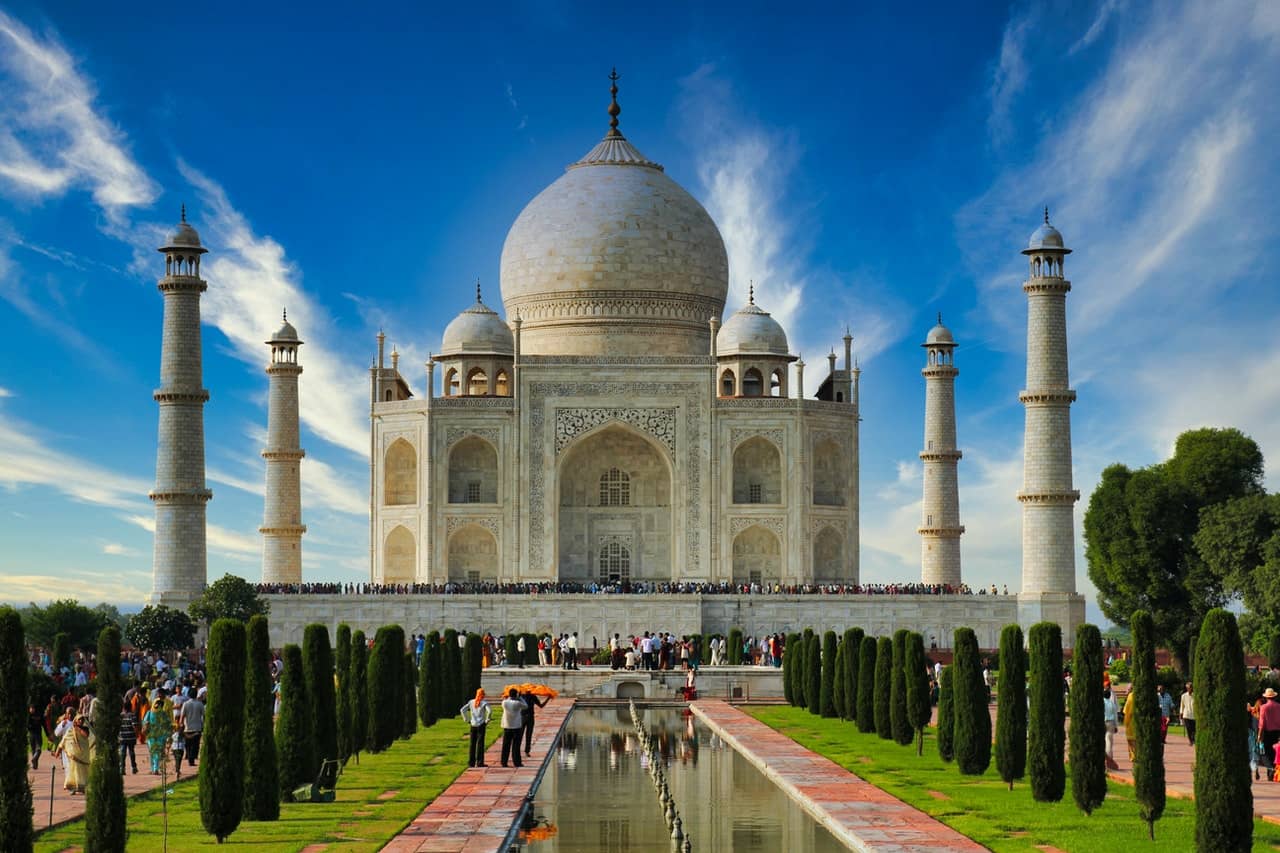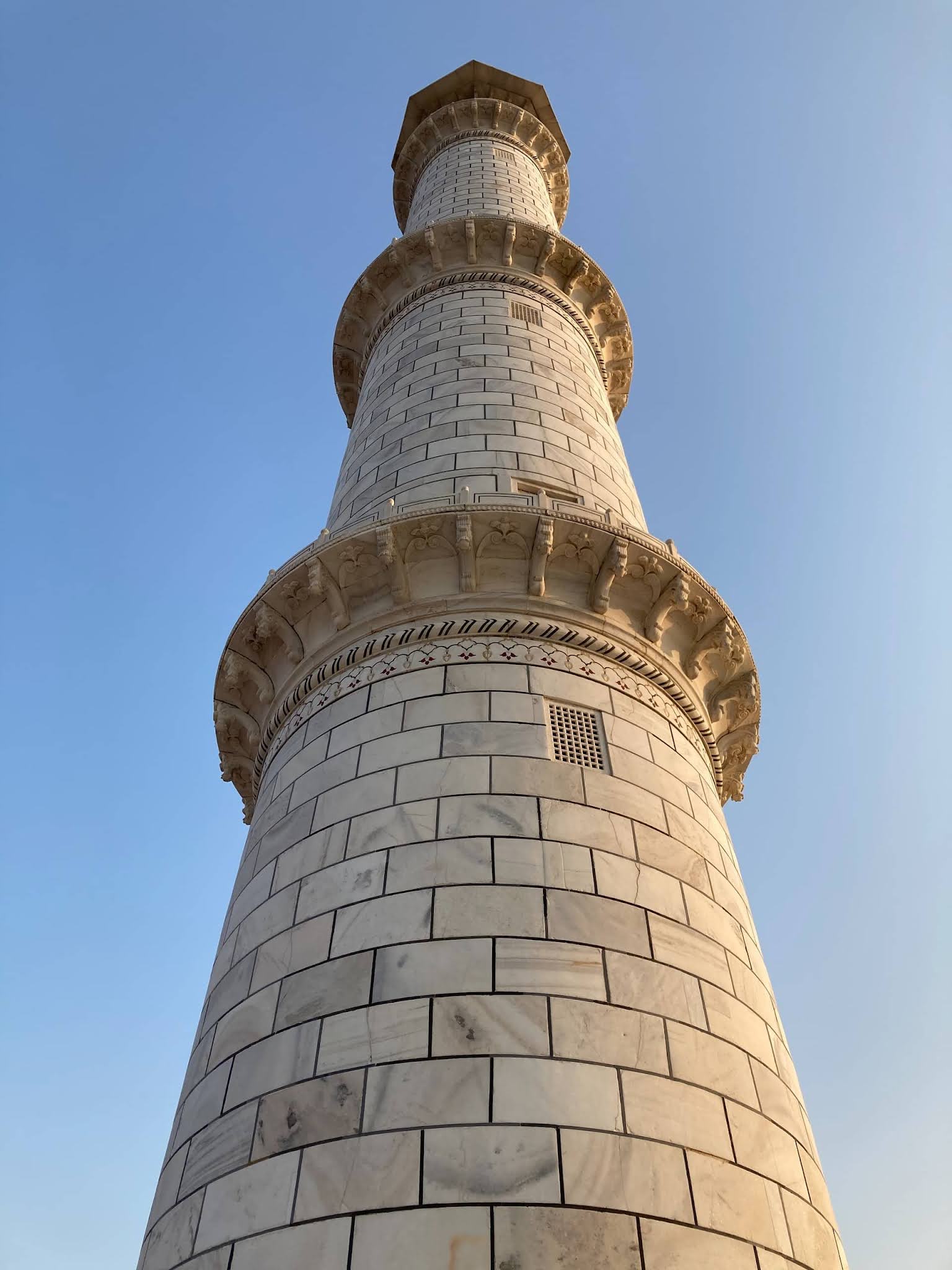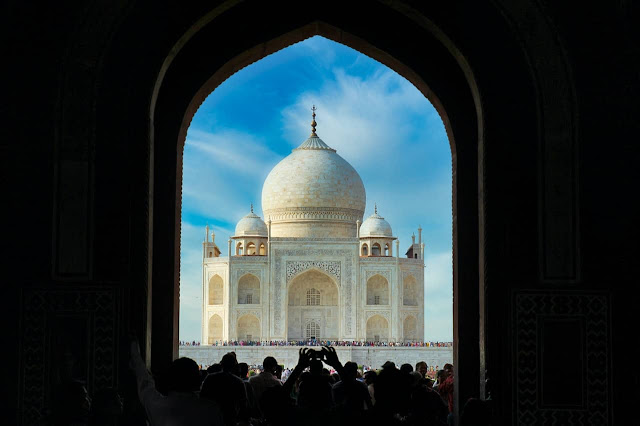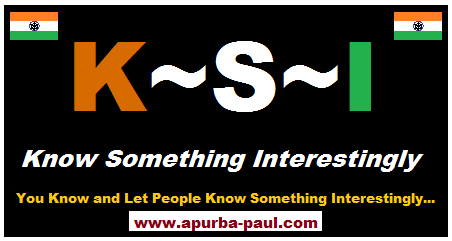☑ A few interesting facts about the Taj Mahal:
Taj Mahal: - One of the seventh wonders of the modern world is the Taj Mahal in Agra. A royal tomb is located in Uttar Pradesh, India. The Mughal emperor Shah Jahan built this magnificent monument in memory of his wife Arjumand Banu Begum, also known as Mumtaj.
The Construction Taj Mahal began in 1632 and was finished in about 1653. The Taj Mahal is considered to be one of the most fascinating emblems of Mughal architecture, a combination of Persian, Turkish, Indian, and Islamic architecture. It was listed as the place of UNESCO World Heritage in 1983. That is why it was called the "World Heritage of the World's Greatest compliment."
☐ Inception: - Taj Mahal is one of the most beautiful and captivating monuments in the world. Taj Mahal is a wonderful example of Islamic architecture that symbolizes peace and beauty. In 1631 (1631) Shah Jahan, who was a prosperous emperor during the period of Mughal, was deeply saddened by the death of his second wife Mamtaz. Mumtaz died while giving birth to their fourteenth daughter Gauhar Begum. The construction of the Taj Mahal began after the death of Mumtaz. The main tomb was completed in 1648 and the surrounding buildings and gardens were built after five more years.
His patronage took the Mughal edifice to a new level of refinement. Where the previous Mughal buildings were made of red sandstone. It was Shah Jahan who introduced the usage of white precious marble stone.
☐ Garden: - A large square was built in front of the Taj Mahal. The divisions of the garden are divided into 16 flower gardens using a quarter of the height in the "300 meters × 300 meters" space garden. There is a cistern in the just middle of the garden to reflect the Taj Mahal. There are also several tree-lined roads and fountains in the garden.
This Charbagh garden was first designed by the Mughal emperor Babur so that it is designed like a Persian garden. Charbagh means that the garden like heaven will be reflected. The new Mahtar Bagh on the other side of the river Jamuna gives a hint of different information. The river Jamuna was included in the garden design to make it meaningful as a river of heaven. With the decline of the Mughal emperor, the decline of the garden occurred.
☐ Dome: - The most interesting feature of the tomb is the marble dome which is above the Taj Mahal. Its size is about 35 meters. Its height is due to the fact that the dome is mounted on a cylinder-shaped drum of a height of 7 meters. Due to its shape, sometimes this dome is called the onion dome or guava dome.
The top of the dome is decorated with a lotus flower, its height makes it more fascinating. Above the dome is an old probably copper or bronze bar with traditional Hindu ornaments. The tomb stands on a square altar. The structure of the foundation is luxurious and has a few rooms. Mumtaz Mahal and Shahjahan memorials have been placed in the main room, and their graves are one level below the soil.
The foundation is basically a broken cube. On either side is a large pistol or large bow-shaped path about 55 meters long, with the structure of the iwan, and a similar bow-shaped porch above. This main bow-shaped Taron(তরোন) has grown to connect the facade attached to the roof of the building above. The big dome is important because there are four smaller domes around it. Their pillars have risen from the foundation to the roof. The smaller domes also have copper or copper's old teeth.
☐ The minarets(Minar): - The minarets have four large posts at the corners of the main altar, each more than 40 meters high. The minarets are modeled on the traditional minarets of the mosque where the muezzin gives the call to prayer. Each minaret is divided into two equal porches with three equal heights. At the very top of the minaret is the last verandah with a canopy similar to that of the tombs. Each minaret is tilted slightly outwards from the altar so that even if the minaret ever collapses, it should not fall on the main tomb.
In the late 19th century, a part of the Taj Mahal was badly damaged due to a lack of repairs. During the Sepoy Revolution of 1857, the Taj Mahal was desecrated by the British troops, and the government officials removed the precious sapphire from the walls of the Taj Mahal by using the apparatus called Batali.
❤ Thanks a lot for paying attention to this topic. Please like, share, and subscribe to our blog to get more articles on various topics...
























Thank you for getting in touch with us (KSI BLOG)